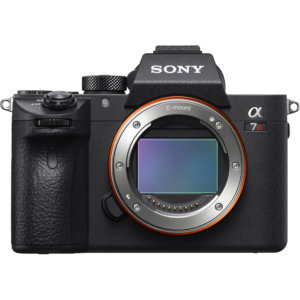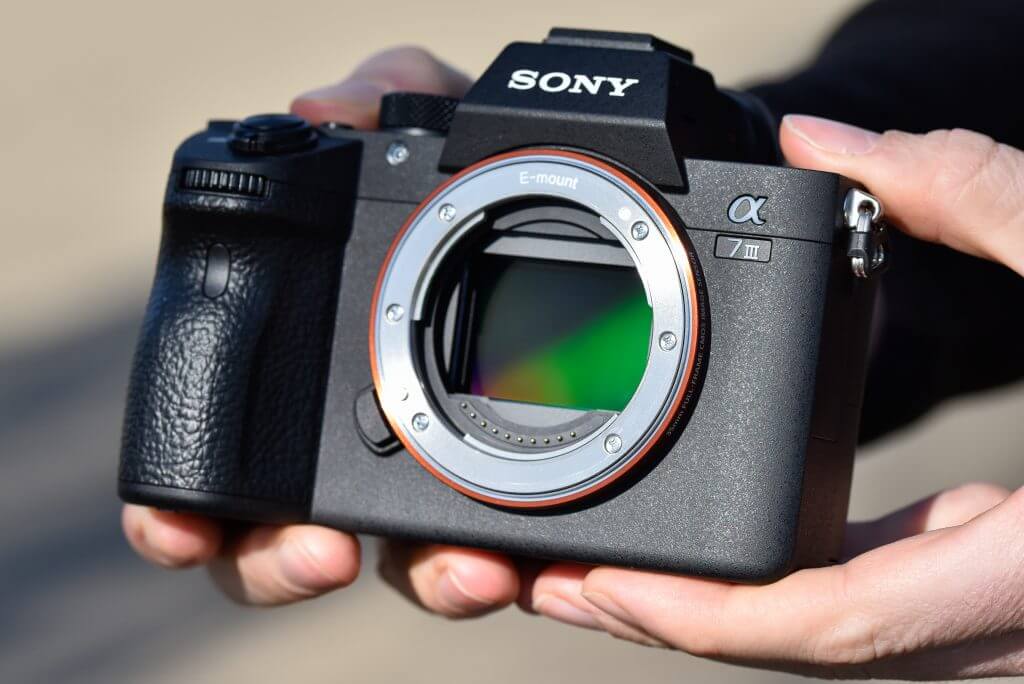What is a mirrorless camera? What makes it different from a DSLR Camera? If you’re new to the world of interchangeable lens cameras, you may find yourself asking this question. And it is confusing to try and figure out which is best for you.
To help you better understand — we’ve broken down the details, from how it works, to the different styles. Check out how the mirrorless cameras fare against their mirror-laden counterparts.
What is a Mirrorless Camera?
As the name suggests, a mirrorless camera is one that doesn’t require a reflex mirror, a key component of DSLR cameras. The mirror in a DSLR reflects the light up to the optical viewfinder. In a mirrorless camera, there is no optical viewfinder. Instead, the imaging sensor is exposed to light at all times. This gives you a digital preview of your image either on the rear LCD screen or an electronic viewfinder (EVF). Mirrorless cameras are called “mirrorless,” rather than DSLRs being called “mirrored,” simply because they came second.

Mirrorless Sony Camera
Now, the term “mirrorless” is a little confusing. It didn’t really become used until the advent of mirrorless digital cameras with interchangeable lenses, but many styles of camera lack a reflexing mirror. Technically, a point-and-shoot is a mirrorless camera, as is a Leica rangefinder, and even older film models. However, the term “mirrorless” is generally used to describe digital interchangeable lens cameras (ILCs) that either have electronic viewfinders or simply no viewfinder, and that’s how we’ll be using it here.
If we already had DSLR cameras at all different price points, what was the point of removing the mirror and creating a new category of camera? The main reason is simply size. Without the beefy mirror box taking up space inside the camera body, mirrorless cameras can be made much smaller than their DSLR counterparts. Originally popular with beginners and casual photographers, this design has now grown on professionals, as well. We’ll get into additional advantages below.
Lots of Lenses To Choose From
Like DSLR cameras, mirrorless cameras use a bayonet-style mount for attaching different lenses. Each manufacturer has its own proprietary mount, so you can’t use just any mirrorless lens on any mirrorless camera. However, many third parties will produce lenses for those mounts, as well. The sole exception here is Micro Four Thirds, a mount that is shared by Panasonic, Olympus, and a few specialty players like drone maker DJI and cinema camera manufacturer Blackmagic Design. Any Micro Four Thirds lens can be used on any camera with the same mount, regardless of brand, with near full compatibility.
One of the neat things about mirrorless interchangeable-lens cameras is that the flange back distance (the distance between the lens mount and sensor) is much smaller than on a DSLR. This makes it possible to attach a wide variety of lenses from DSLR manufacturers using various adapters. Companies like Fotodiox and Metabones sell lens adapters for mirrorless cameras that will let you use everything from the latest Canon lenses to the oldest medium format lenses you can find. You often sacrifice some performance when you do this, but it can be a huge benefit for photographers with existing caches of lenses.
Sensors, Autofocus, Video & Much More
Despite the much smaller form factor compared to DSLR cameras, mirrorless cameras can have the same size sensors inside. Just as Canon and Nikon offer full-frame and crop sensors in their DSLR cameras, Sony makes both full-frame and crop sensor mirrorless cameras. Companies like Fujifilm have taken it a step further, not only including crop sensors, but also medium-format sensors — which are even larger than full-frame.

Fuji X-T2 Mirrorless Camera
Keep in mind, though, that just because the camera is smaller doesn’t mean its mirrorless lenses will be. A 300mm lens on a full-frame DSLR camera will be the same size on a full-frame mirrorless camera. There’s no way to get around the physics of that. Smaller sensor formats, however, can get away with smaller lenses. Micro Four Thirds, for example, has a crop factor of 2x compared to full frame, so a 150mm lens will yield a 300mm full-frame equivalent field of view — but with not nearly as much bulk. Larger sensors do produce better image quality, so as always, there’s a trade-off.
The autofocus capabilities of mirrorless cameras vary greatly depending on the manufacturer and the lenses being used with the camera. For this reason, it’s difficult to say whether or not mirrorless cameras have an advantage over DSLRs in this department. In the early days, they certainly did not, as they relied on much slower contrast-detection AF systems, but they have improved considerably since then. As good as modern mirrorless AF is, we have still found that DSLRs tend to offer more consistent performance, particularly in low light or when tracking moving subjects.
While mirrorless cameras could feasibly surpass DSLRs in AF performance in the future, the one area where they are likely to always fall short is with battery life. Due to the constant use of the sensor and a live view LCD or EVF, mirrorless cameras burn through batteries much faster than DSLRs. Improvements in efficiency may help this in the future, but for now, the all-day battery life of many DSLRs remains a big advantage for certain photographers, particularly those covering sports or other live events.
However, when it comes to video, mirrorless cameras have a pretty clear win. In video mode, even a DSLR must be set to live view, using the rear LCD screen rather than the optical viewfinder. This erases the battery life advantage, and the viewfinder becomes useless. An electronic viewfinder on a mirrorless camera, however, can still be used in video mode. What’s more, the companies behind mirrorless cameras, particularly Sony and Panasonic, tend to be much more proactive about building in high-end video features to their cameras. Canon and Nikon have done little to compete.
Upgrades and Accessories
Although mirrorless cameras are much newer than their DSLR counterparts, there is no shortage of accessories and add-ons. Most mirrorless systems are mature enough today that they all offer a broad selection of lenses. Many models, although not all, have hot shoes for attaching external flashes, and high-end models offer support for vertical battery grips — just like many DSLRs — which can improve ergonomics and extend battery life.
When it comes to professional studio lighting, we still see broader support for DSLRs than mirrorless cameras, but this is also changing as lighting companies update their wireless transmitters to work with more brands. In the near future, mirrorless cameras are likely to have full parity with DSLRs in the accessory market.
Conclusion
Mirrorless cameras are not inherently better or worse than DSLRs, although they have advantages in some areas (like video) and disadvantages in others (such as battery life). Ultimately, it comes down to what type of camera best fits your needs, whether it’s for family vacations or professional fashion shoots. Mirrorless cameras, particularly the more compact models, tend to be a great choice for casual photographers, who may not be bothered by the shorter battery life and who want a camera they can easily take with them. For more advanced users, it’s more of a toss-up, but you should clearly outline your needs before making a decision.
